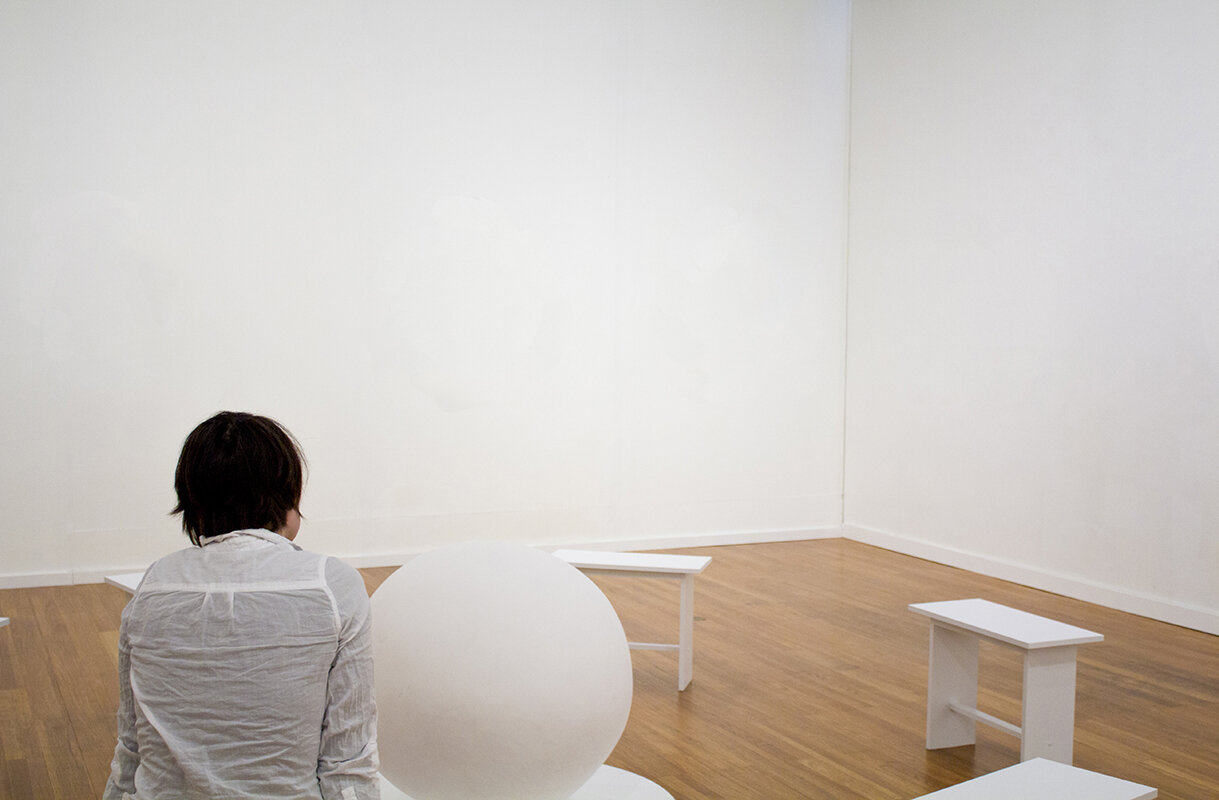ROOM FOR SPACE: Sessions with a Meditative Object
Room for Space invites viewers to stare at a singular object while observing the impact of a meditative moment. Meditation, as research confirms, changes the neurological, physiological, emotional, and biochemical identity of the brain/body in ways that similar exercises in relaxation do not. When performed properly, a meditative moment can generate results such as a thickening of the cerebral lining; increased speed of neuron movement; growth in circulatory enzymes; alteration of genetic code; and a structural change in the brain’s layout. In a reciprocal exchange, the more one meditates, the more one’s body and brain become sculpted by the meditation. Responding to current meditative research, Room for Space asks the base questions: What does it mean to meditate? Can we reach a point of effective meditation without intentionally meditating? How can we identify the moment when meditation is achieved? And, ultimately, can we reach a point of meditation through something as simple as the act of looking?
As both performance and public investigation, Room for Space provided 7 open benches for participants to engage with the meditative object and test the boundary of a meditative moment on their own accord. I also scheduled 13 sessions for my own staring, which were executed in increasing intervals of 10-minutes, beginning with 0 minutes and ending with 2 hours over the course of 2 weeks. As a person who did not uphold a personal meditation practice, I chose to stare at the spherical form for increasing time increments to determine if the act of contemplative looking can equate active meditation. My engagement with the object was strict and limited: I did not recite mantras; I did not practice mindful release; I did not observe my breaths; I did not implement any traditional meditational practices. I sat, I stared, and I did not look away from the object until my timer indicated the session was complete.
Concluding each staring session, I walked from the bench to the wall and painted a circle to represent the physical impact of my internal transformation. Standing in place of the live action, these circles both asked and answered the question: If, by staring at a singular object, did I reach a point of meditation? If so, at what point did my meditation begin? Can the meditation be observed in the resulting mark on the wall? And how long does it take for an object to make a measurable impact on my biology?
The circles on the wall function as measurements for the immeasurable while generating evaluative results. Existing in a tangential relationship to the initial query, the circles are a raw expression of the gestural moment, unfiltered by thought or technique. Gesture synthesizes the body’s internal and external self and quantifies an ephemeral relationship between action and reaction. At the conclusion of the exhibition, and after 12 separate sessions with the object, a visual testimony of my cerebral experience emerged. This transcribed data remained available for public analysis and allowed each of us to derive our own comparative conclusions. By elevating the act of contemplative looking, this installation resulted in a living, sculptural relationship between the stagnant object, our own permeable biology, and the active choice of belief.






